
Kawasaki
Ki-48-II 'Lily'
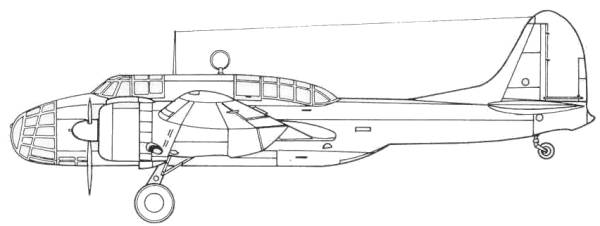
The Ki-48's design was initiated following the appearance of the Russian SB-2 in the skies over China during the second Sino-Japanese conflict. The SB-2 due to its speed was virtually immune from fighter attack being almost as fast as the Ki-27 which was then just entering service. Japanese staff officers were so impressed that they obtain authorization to develop a similar aircraft in Japan. In December 1937 Kawasaki were instructed to design a twin engine light bomber to meet the following requirements; A maximum speed of 298 mph at 9,845 feet, cruising speed of 217 mph at the same altitude, climb to altitude of 16,405 feet in 10 minutes, carry a bomb load of 882 pounds, have a defensive armament of 3 or 4 flexible mount 7.7mm machine guns, us two Nakajima Ha-25 radial engines and have the ability to operate under extreme cold weather conditions such as those encountered in Siberia. Actual design work began in January 1938. Experience gained in the design of the Ki-45 was incorporated in the design. Completion of the design work was delayed due to difficulties encountered with the Ki-45 and the first four Ki-48 prototypes were not completed until July 1939. During flight trials the ki-48 easily met all of the performance requirements and the maneuverability and handling characteristics of the aircraft were praised by the Service pilots. However, the prototypes suffered from severe tail flutter and five pre-production Ki-48's built between September and November 1939 were used to test various tail modifications. It was found that raising the horizontal tail surfaces 13 inches and using some strengthening in the rear fuselage the flutter problem was eradicated. In late 1939 quantity production was initiated under the designation Ki-48-Ia.
By the Autumn of 1940 the ki-48 had distinguished itself in combat at the Northern China front. Facing no real opposition from the Chinese Air Force, the Ki-48-I's performed satisfactorily and the aircraft's speed was praised by its crews. Late production aircraft were designated Ki-48-Ib's and incorporated various minor equipment changes and improved gun mountings. A total of 557 Ki-48's were built until June 1942. When the war began the Ki-48-I's were the most important light bomber outside of the Chinese front and they operated against the Commonwealth forces in Malaya and Burma and against American forces in the Philippines prior to being deployed to the Netherlands East Indies / New Guinea area. The Ki-48-I did not fare too well against Allied aircraft as its speed was too low to avoid interception, its defensive armament was ineffective, its bomb load was insufficient and it lacked crew and fuel protection. However an improved model was already under development when the Pacific War began. It featured more powerful engines, a small increase in fuselage length, fuel tank protection and armor plating to protect the crew. Within two months of the first flight of the Ki-48-II it was placed in production. Although it could carry double the bomb load of the earlier model it was still insufficient and in this respect it compared poorly with contemporary Allied aircraft. Its maximum speed was still too slow to avoid interception and it was an easy target for Allied fighters. Large numbers of them were also destroyed on the ground in New Guinea despite the efforts of the Japanese to disperse and camouflage them on the jungle airfields. However its main deficiency was its wholly inadequate defensive armament.
The Kit
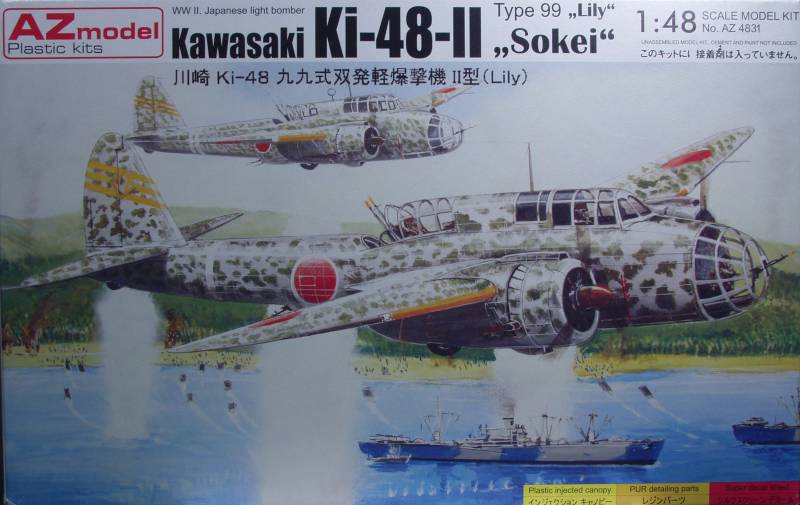
The AZ models kit has been pretty badly beaten up by the accuracy zealots and while I find it hard to see some of the things they complain about in other kits, I don't have that problem with this one. While there are numerous issue that have been pointed out the most noticeable is the nose area which just doesn't look right. It's a shame in the day and age of 3D modeling and computer graphics that such mistakes are made but perhaps AZ didn't have the expertise that some of the larger Chinese and Japanese companies have. If this wasn't bad enough the kit is very pricey selling for around $100. That said I will most likely build the kit anyway as I consider it unlikely that another one will be released in this scale any time soon. I will if I think it's doable try to correct the shape issues but if I can't, I suspect most of the people I show it to wouldn't see the problems anyway.
The kit comes in a medium sized top open box with reasonably nice artwork on the front. The bottom of the box has painting and marking details printed in color. Inside the box are three sprues of light gray plastic each in a resealable bag, a nice feature I think. The clear parts are in yet another resealable bag and there is a zip lock bag with some resin parts. The molding of the parts is crisp with only a small amount of flash here and there. The surface detail consists of recessed panel lines and they are small and uniform. I only noticed a couple small areas where the lines had filled and need to be touched up
. The control surfaces are all fixed in the neutral position and the fabric detail is a little heavy although not that much out of the norm these days. The kit is very much in the short run category in that there are no alignment pins on the parts and the wings and horizontal tail surfaces are just butt joined to the fuselage. The parts in the kit can be used to build either a Ki-48 I or II and there are a limited number of part differences between the two and these are pointed out in the instructions. The kit provides a reasonable amount of interior detail and there are a couple of ejector pin marks that will show if not cleaned up. A bit of resin is included in the kit which is used for the engines, a crankcase with individual cylinders. The parts are cleanly molded with little flash. The balance of the resin consists of some interior parts. The propellers have individual blades and you are on your own to get them set at the correct angle. The wheels are unweighted. There is no detail in the bomb bay nor options to have it open, the gear bays are equally devoid of detail. See below.
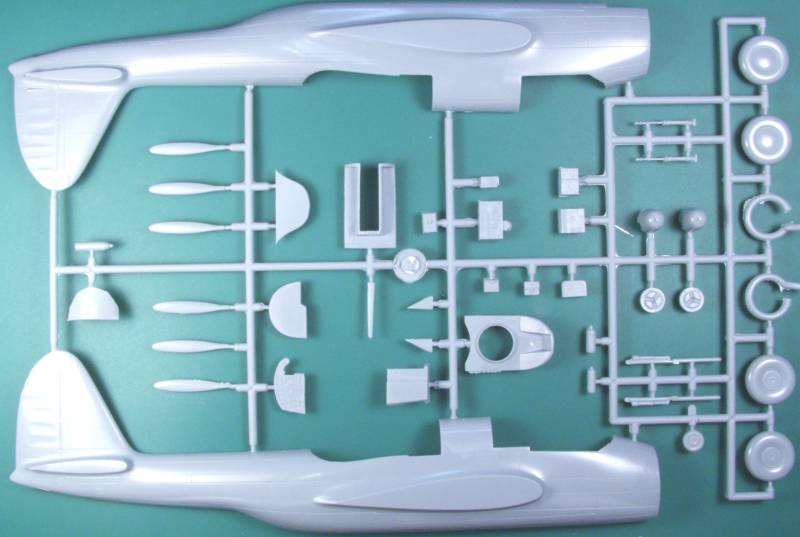
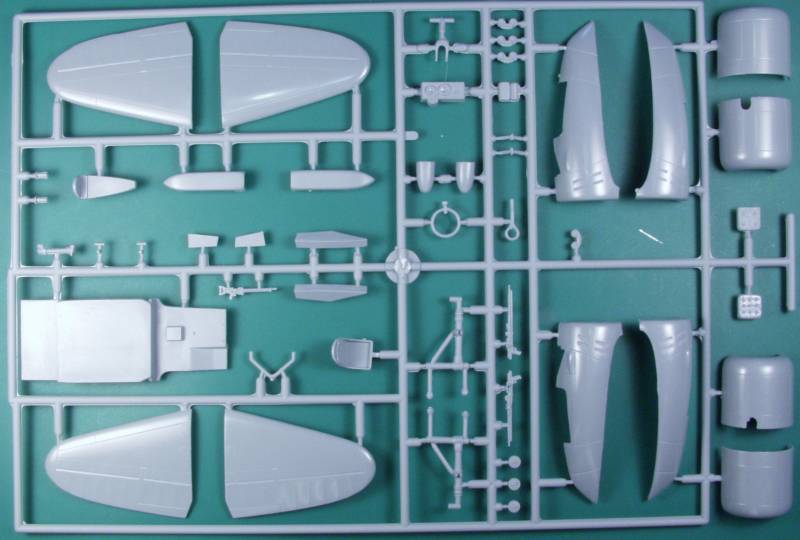
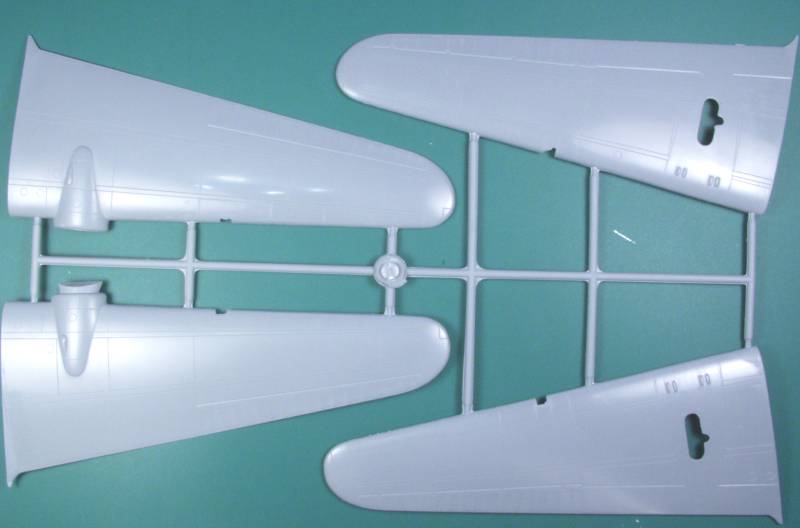
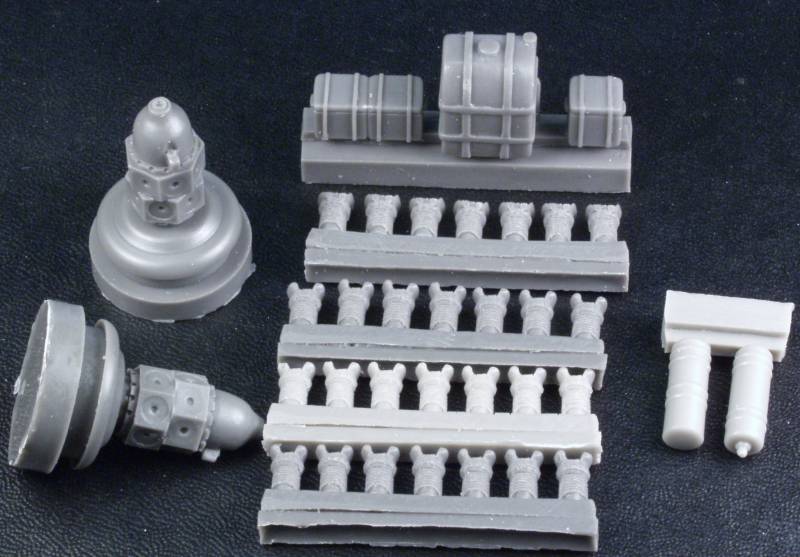
The clear parts are thin enough for the scale but have a cloudy appearance, whether this is a surface issue that will clear up once cleaned and dipped in Future or something that goes clear through I can't say at this time. See below.
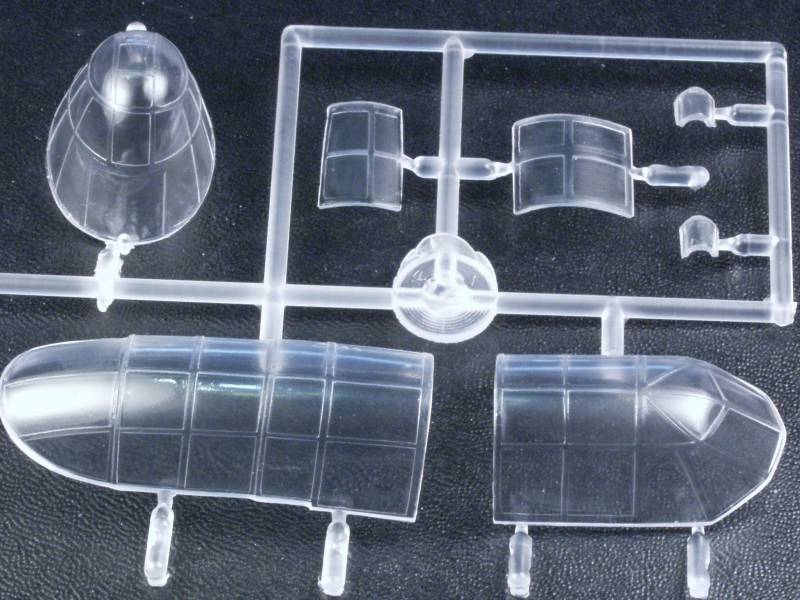
The decals are thin and have quite a bit of excess clear film around them. The white and yellow marking do not look opaque enough to me to use over a dark color, registration isn't an issue and they are sharply printed. There is also a fair amount of stenciling provided, something not often seen on Japanese kits. Seat belts are also provided on the sheet. See below.
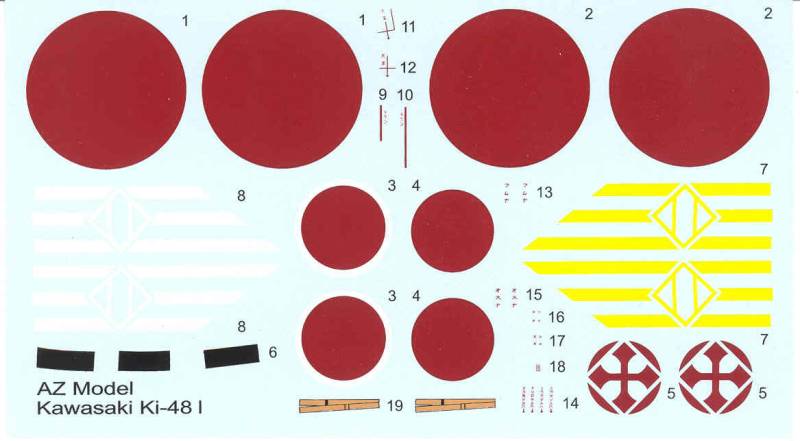
The instructions are a small booklet made from two A4 pages printed on both sides, folded and stapled together. The first page has a parts map and a symbol chart, except for the last page the rest have assembly steps, the back page has side view line drawings illustrating the two versions and additional line drawings calling out decal positions.
After Market Goodies
None that I know.
Conclusions
Well, everyone hoped for better but what we got was a lackluster kit with a bunch of shape errors, that certainly doesn't make it unbuild able and if you ignore the shape issues which probably won't bother a lot of folks it should build into a nice looking model. It does need to be treated a a limit run style kit but I think it should be build able by most who have a few limited run kits under their belts.
Links to kit build or reviews
None that I know.
References
Japanese Aircraft of the Pacific War by R.J. Francillon
Aircam Aviation Series No.32, Kawasaki Ki-48-I/II Sokei in Japanese army Air Force - CNAF & IPSF Service by Richard Bueschel
Back to the Misc Japanese Page